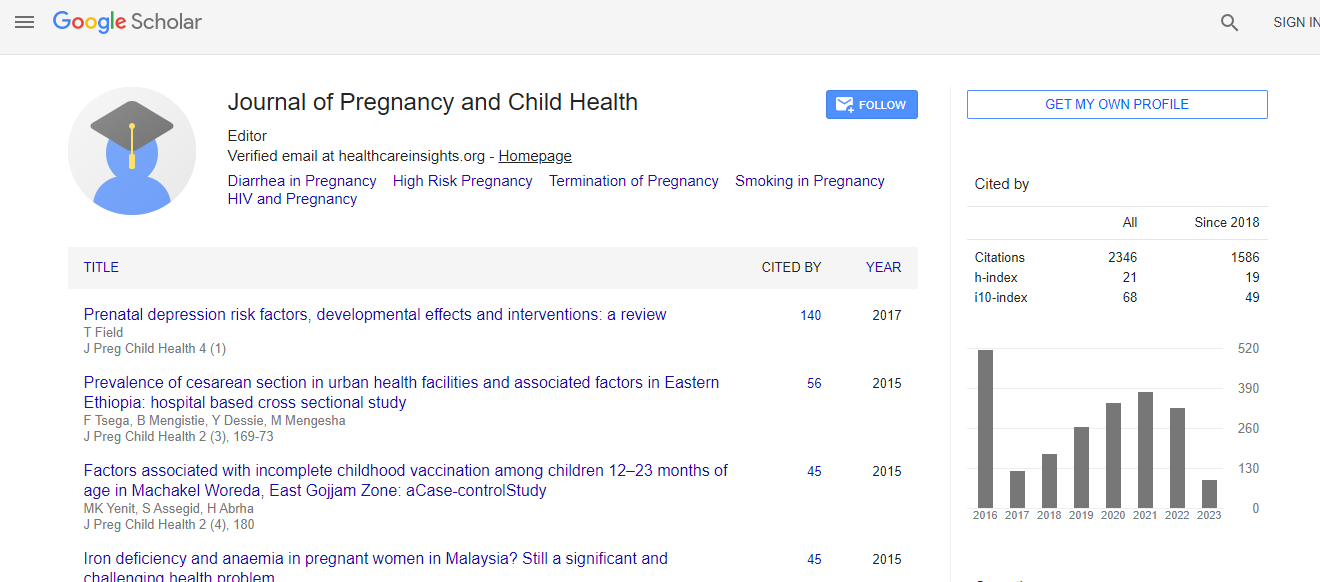Research Article
Comparison of Outcomes in Maternal Opioid Medical Support Using Centering Pregnancy Versus Maternity Care Home
Adams J1, Kenny T1, Frantz K1, Craig M1, Eden R1, Bellante A1, Silber A1, McCarroll ML1,2*, von Gruenigen VE1,2 and Gothard MD3
1Summa Health, Department of Obstetrics and Gynaecology, Akron, OH, USA
2Northeast Ohio Medical University (NEOMED), Rootstown, OH, USA
3Biostats, Inc. North Canton, OH, USA
- *Corresponding Author:
- Mc Carroll ML
Summa Center for Women's Health
Research Summa Health, Akron
OH 44304, USA
Tel: 3303754880
E-mail: mccarrollm@summahealth.org
Received Date: June 25, 2016; Accepted Date: July 20, 2016;; Published Date: July 26, 2016
Citation: Adams J, Kenny T, Frantz K, Craig M, Eden R, et al. (2016) Comparison of Outcomes in Maternal Opioid Medical Support Using Centering Pregnancy Versus Maternity Care Home. J Preg Child Health 3:271. doi:10.4172/2376-127X.1000271
Copyright: © 2016, Adams J, et al. This is an open-access article distributed under the terms of the Creative Commons Attribution License, which permits unrestricted use, distribution, and reproduction in any medium, provided the original author and source are credited.
Abstract
Objective: To implement and evaluate two enhanced models of prenatal care in a high-risk population. Design: A non-randomized, retrospective case-control study was conducted with a 1:1 matching selection of participants by age, race, insurance status and marital status. Materials and methods: This study examined two types of prenatal visit models at the same center under the same perinatology service. One involved a group medical visit format using Centering Pregnancy (CGC). The other used standard individualized one-on-one Maternity Care Home (MCH) medical visits. The CGC prenatal visits met weekly or biweekly in lieu of regular MCH prenatal visits. The MCH prenatal visits occurred based on the prenatal care plan for high-risk opioid addicted pregnant women. Outcomes of maternal age (MA), gestational age (GA), Neonatal Intensive Care Unit admission (NICU), APGAR 5-min (APGAR-5), total number of prenatal visits (TPV), ultrasound visits including antenatal testing (USV), emergency room obstetrical triage visits (ERV), and breastfeeding at discharge (BF) were analysed using SPSS 22.0. Results: The CGC and MCH groups were matched cases (p=0.938) in age: 27.8 ± 3 years; race: 98% Caucasian; insurance type: 100% public and marital status: married 15%, single 78%, divorced 3%. Statistically significant differences were noted in TPV: 17.4 ± 6 versus 8.6 ± 7, (p<0.001); USV: 6.7 ± 4 versus 3.7 ± 3, (p<0.003) and ERV: 1.8 ± 2 versus 3.2 ± 2, (p<0.02). No statistically significant differences were noted between CGC versus MCH matched cases in GA: 75%, versus 69% full term, (p=0.580); APGAR-5: 8.9 ± 0.2, 8.5 ± 1.6, (p=0.121); NICU: 12 versus 11, (p=0.795); and BF: 79% versus 64%, (p=0.174), respectively. Conclusion: These results indicate that the CGC group prenatal visit model for opioid addicted pregnant women is clinically advantageous over MCH for ensuring prenatal visit compliance and reducing ERV in a high-risk population. Further research is warranted to investigate a cost-benefit analysis and the effects on maternal fetal outcomes postpartum.

 Spanish
Spanish  Chinese
Chinese  Russian
Russian  German
German  French
French  Japanese
Japanese  Portuguese
Portuguese  Hindi
Hindi 
